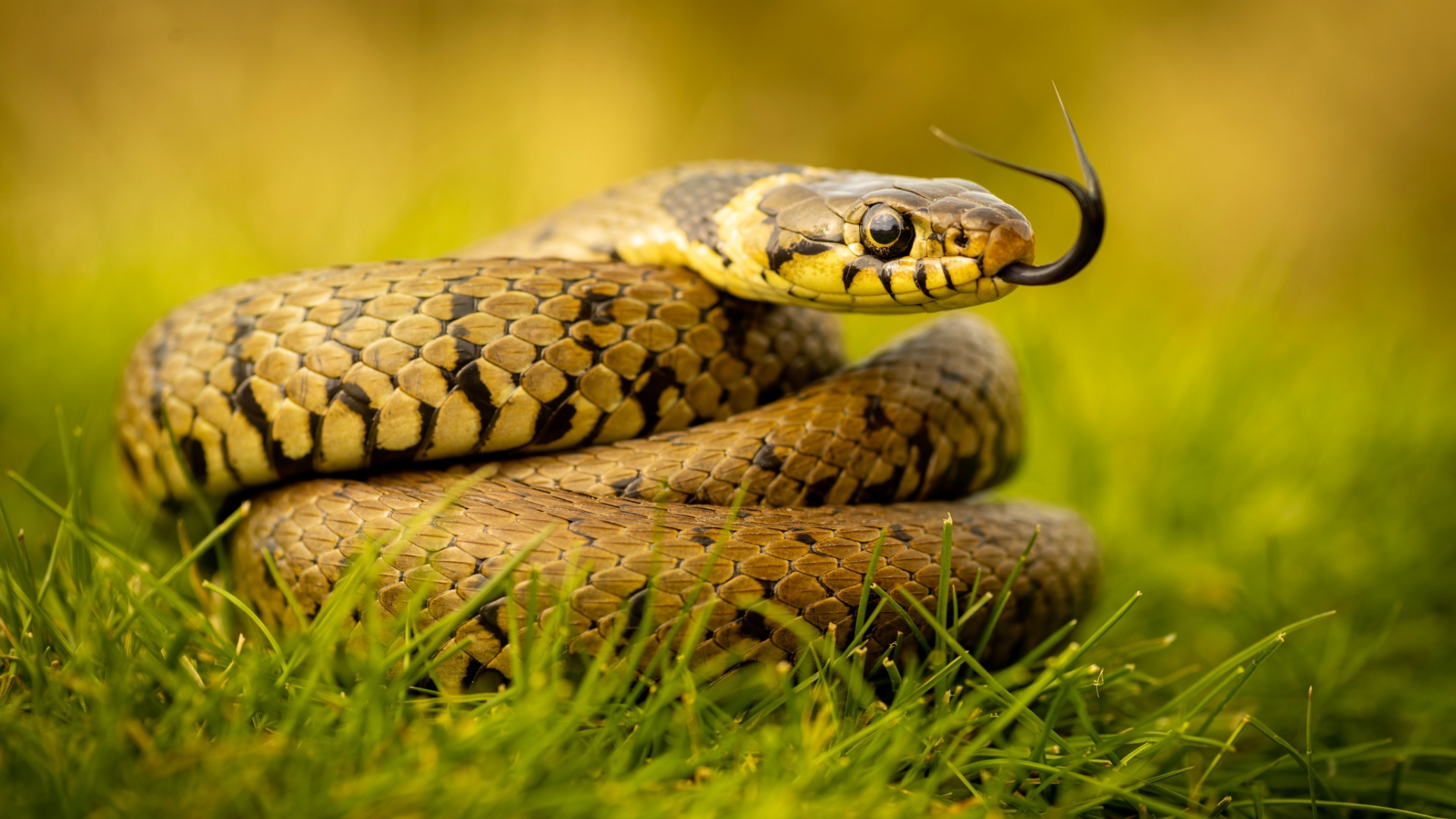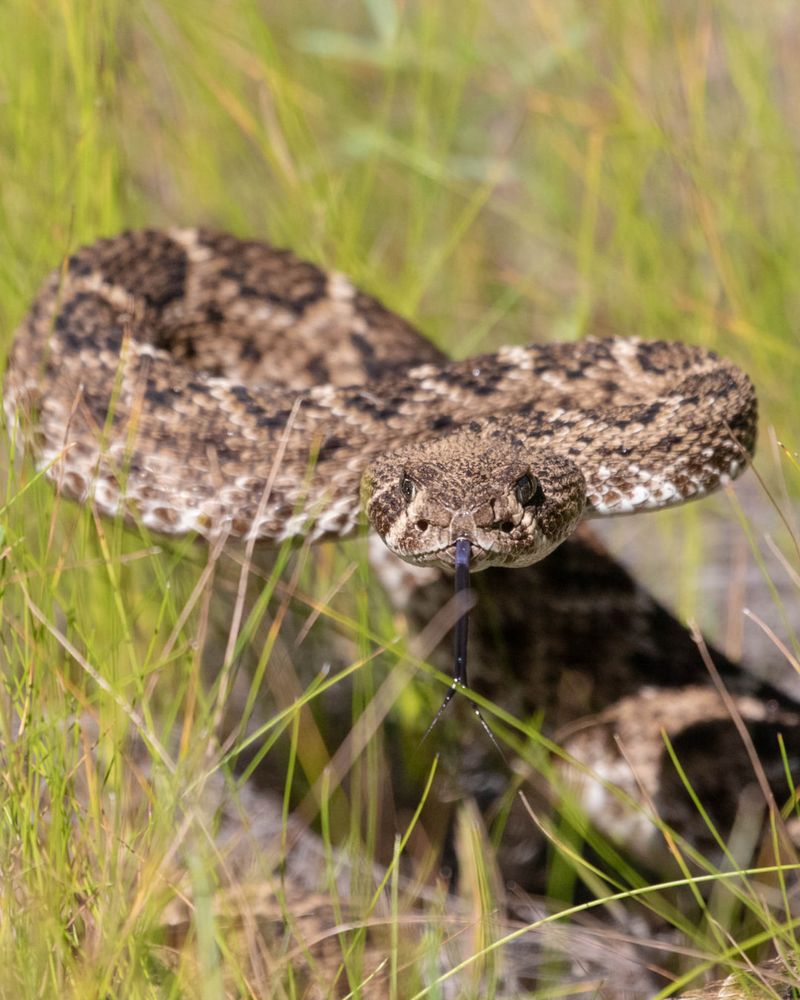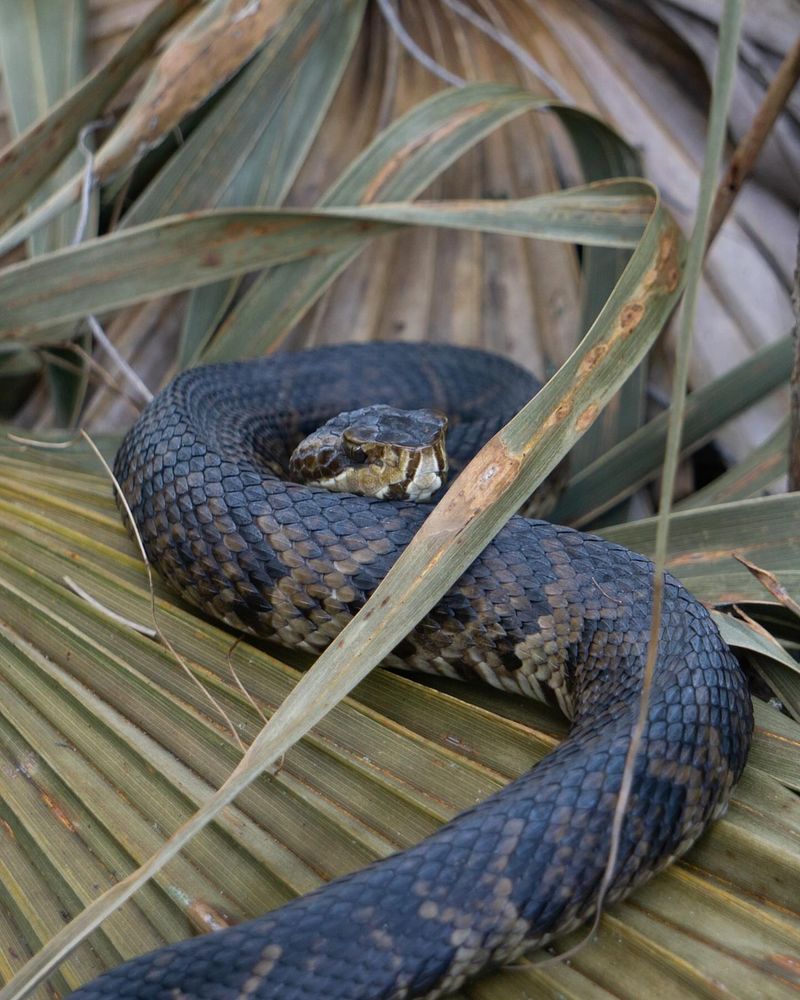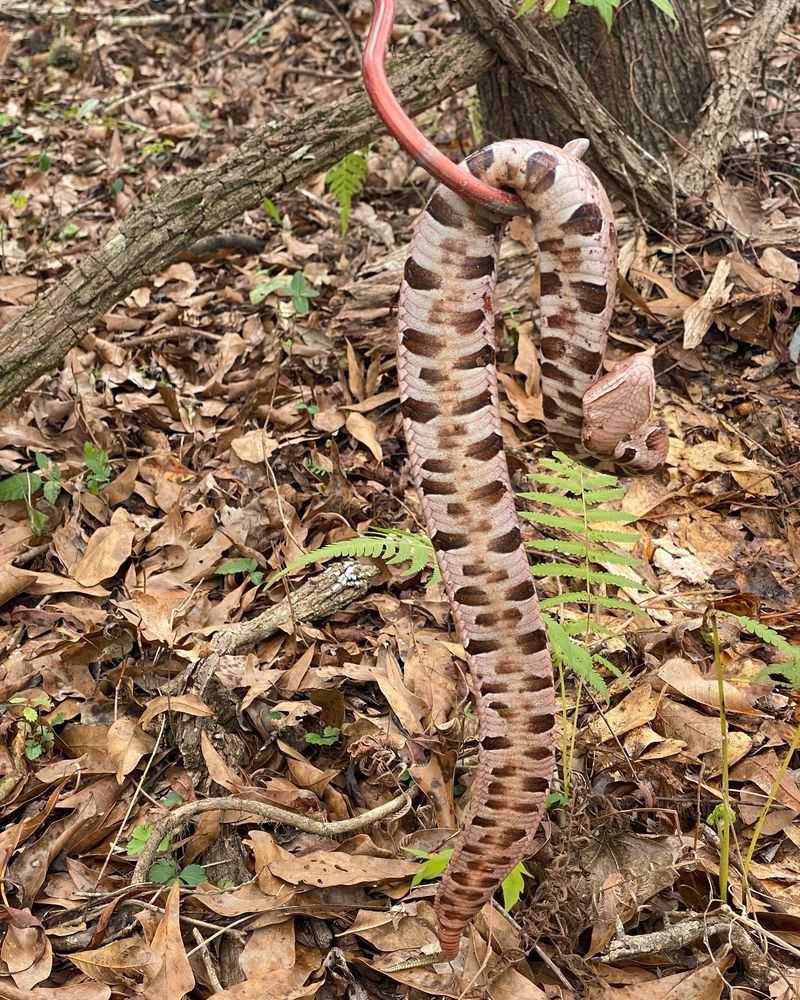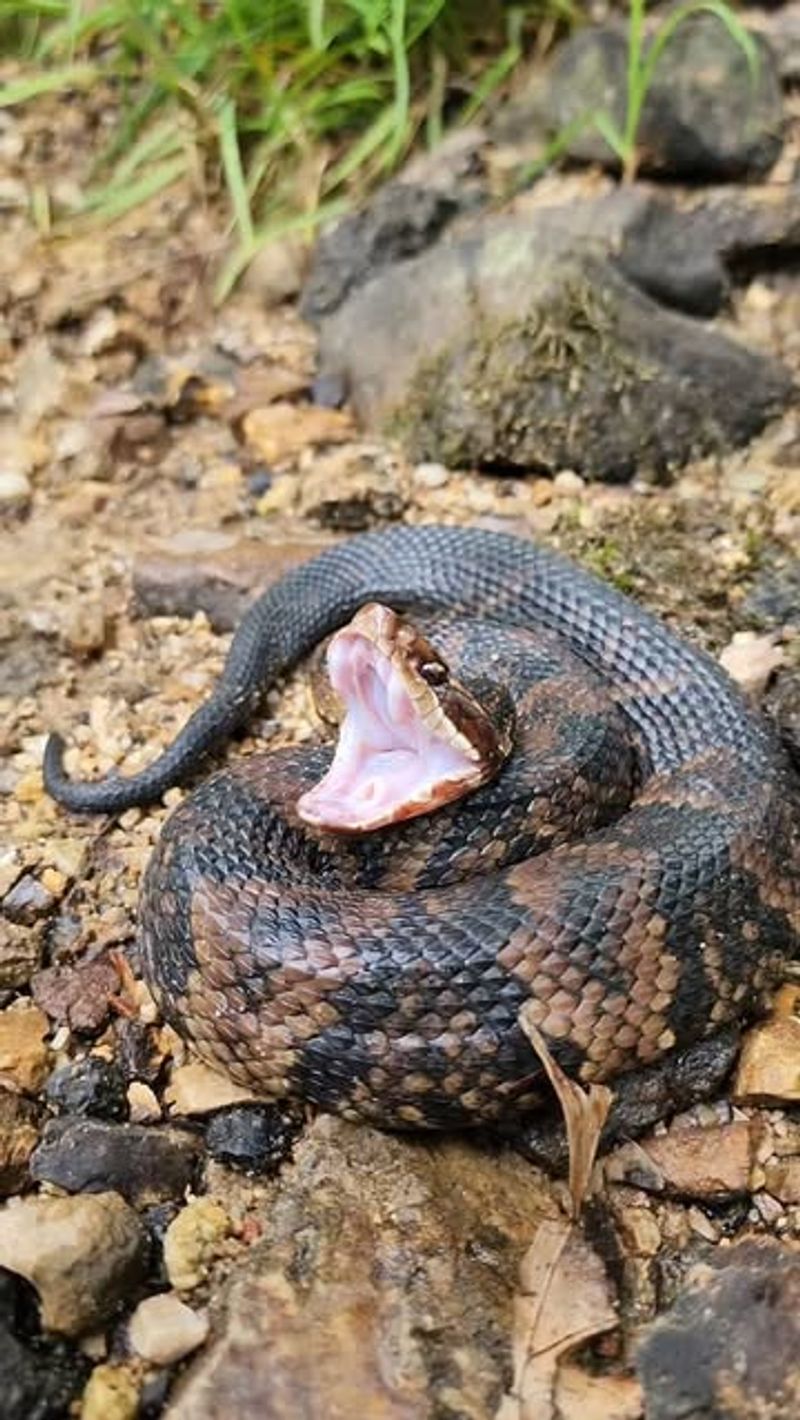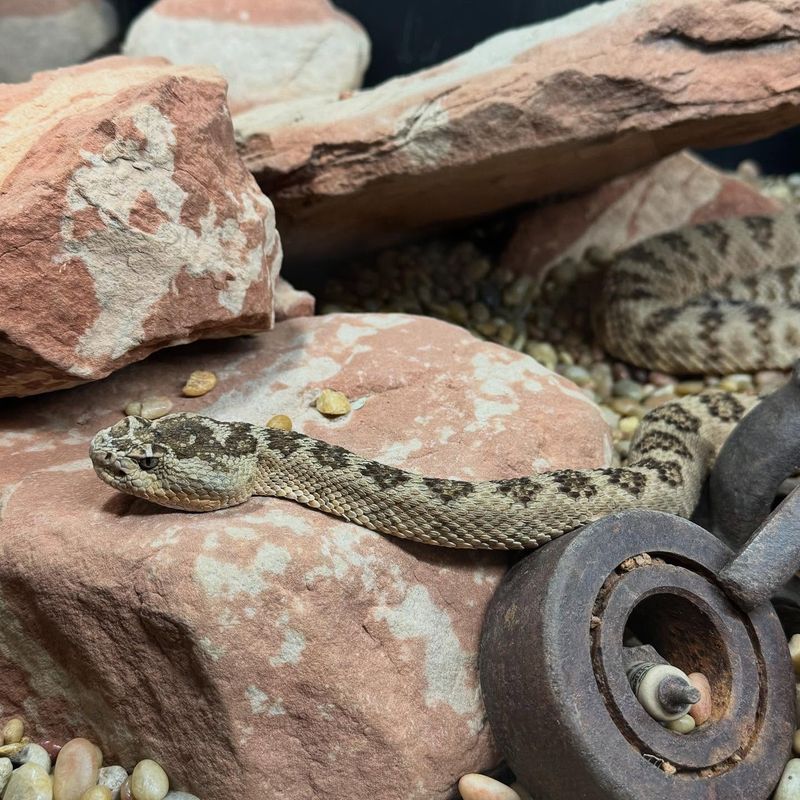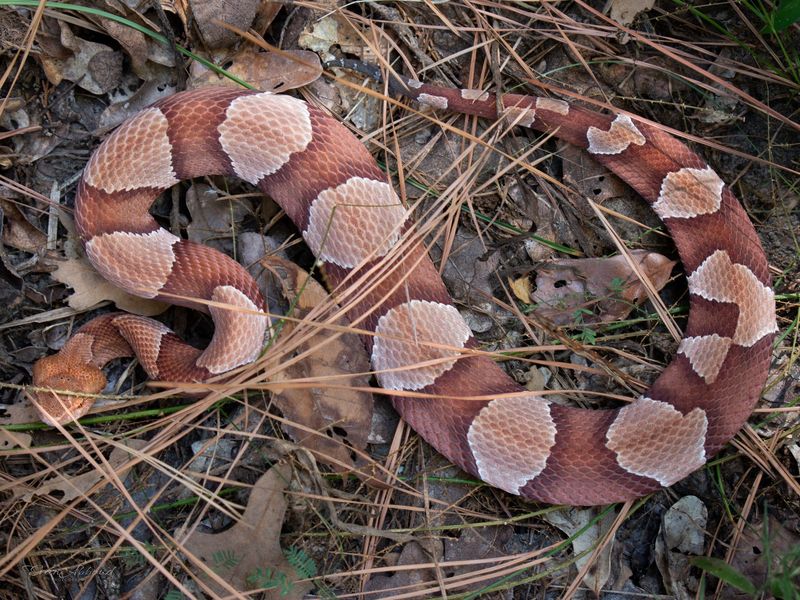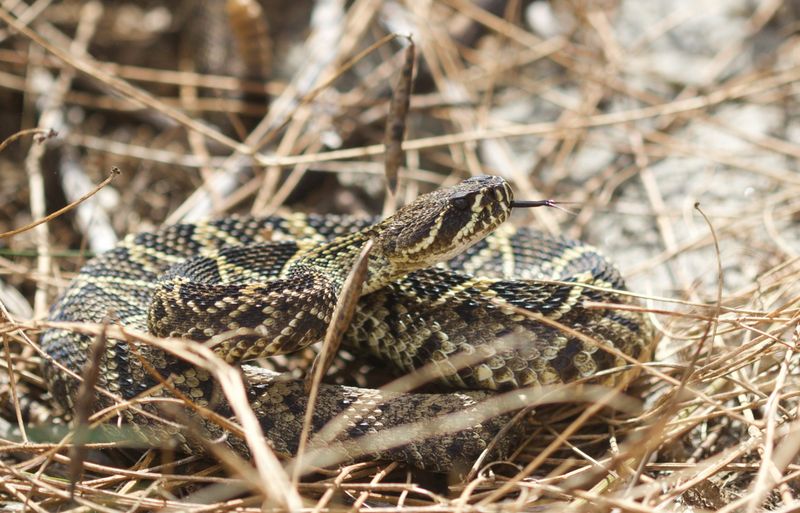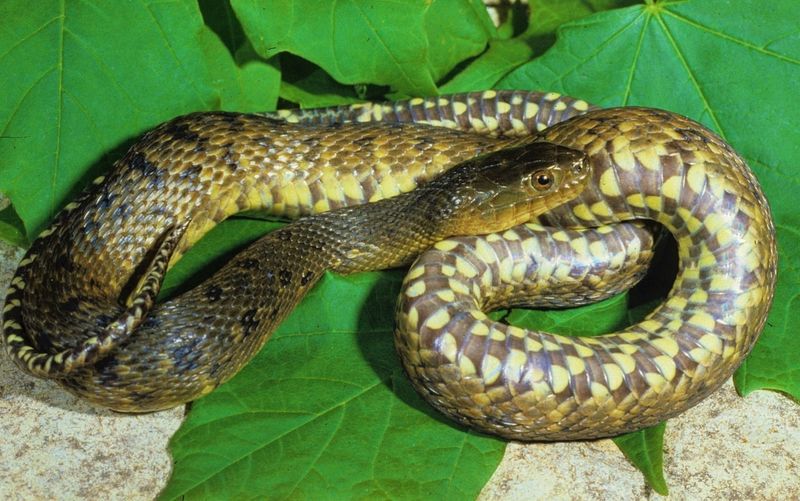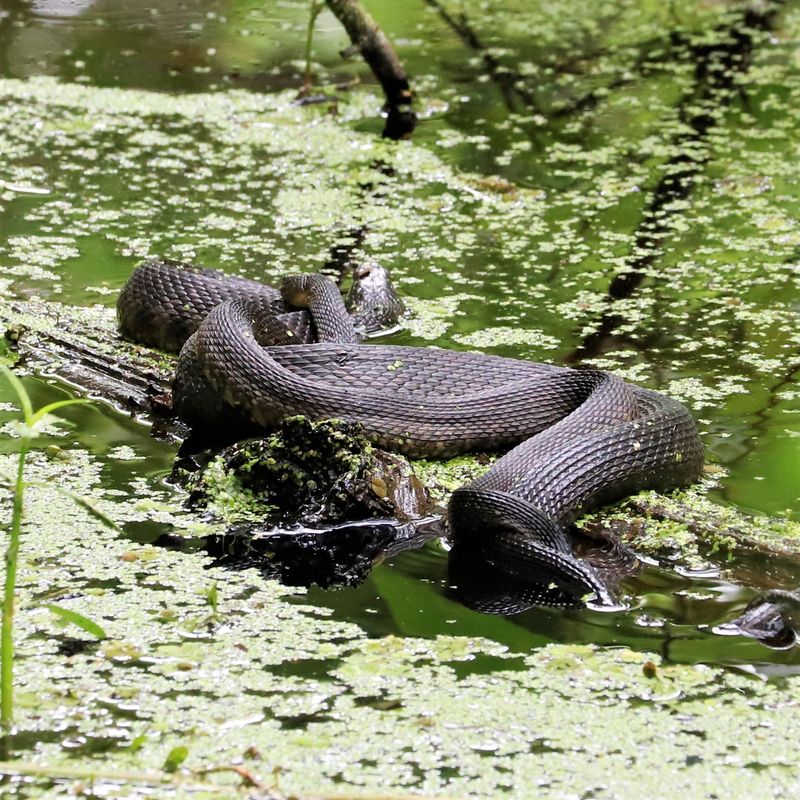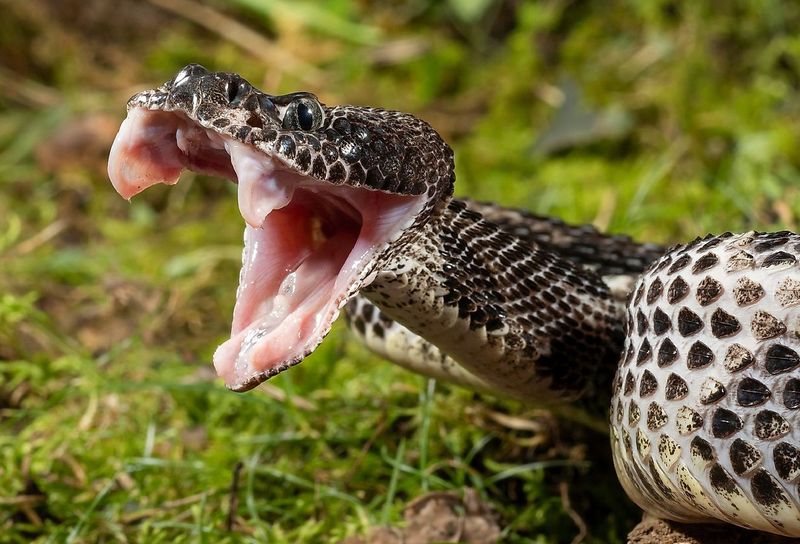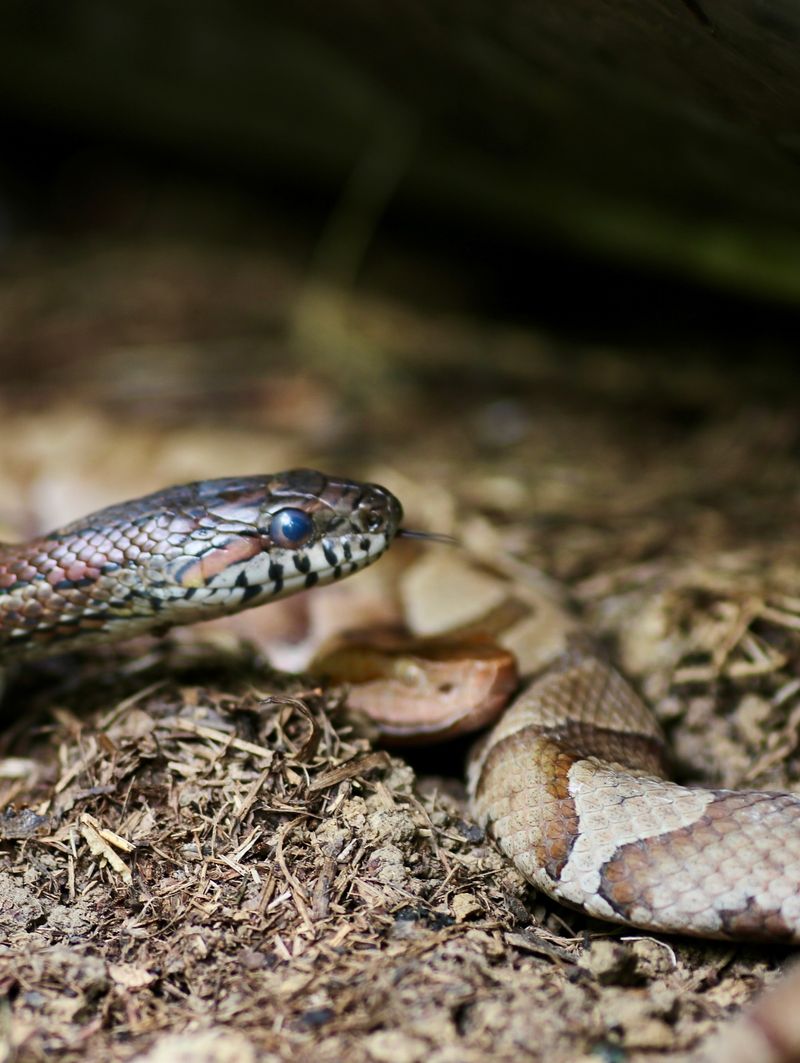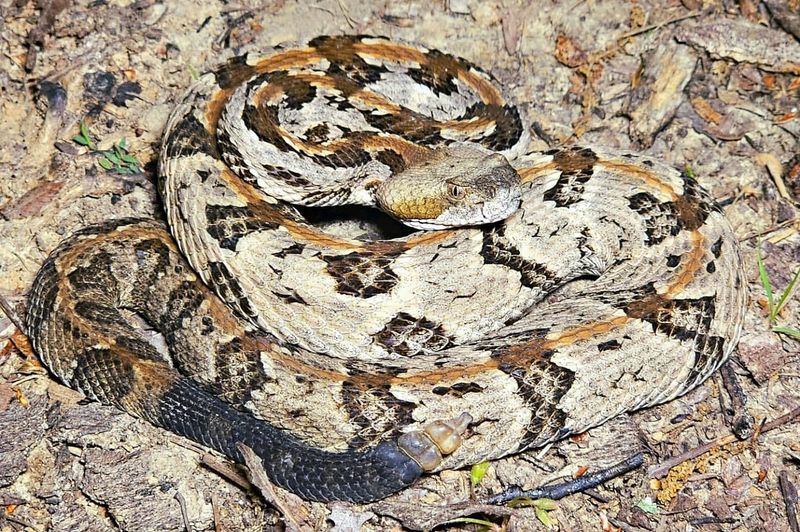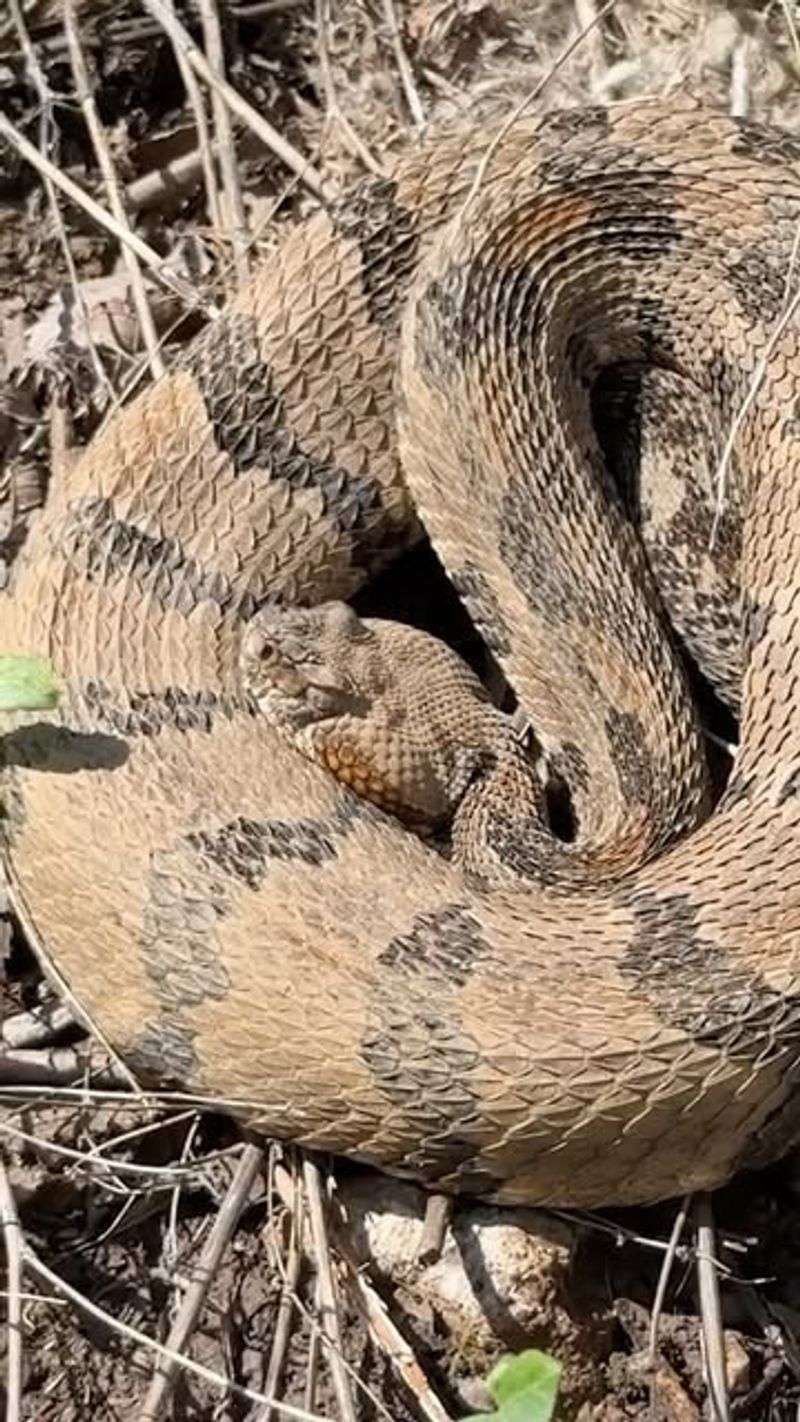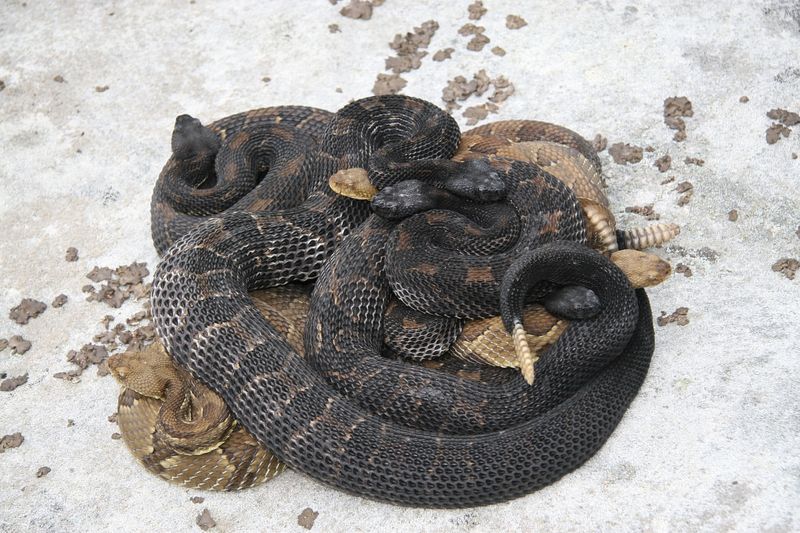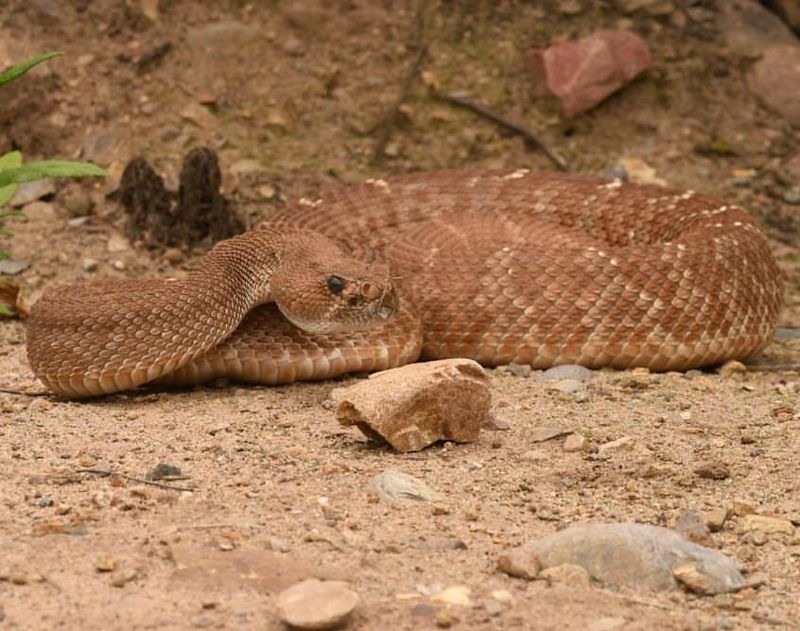Snakebites are on the rise—and some states are seeing more than their fair share. Alabama’s on the list, but it’s not alone.
Here’s why bites are spiking in 15 states—and which plants can help keep snakes out of your yard. The right greenery could be your first line of defense against these slithering intruders.
1. North Carolina Tops The Charts
The Tar Heel State leads America in snakebite incidents with approximately 19 bites per 100,000 people annually. Its diverse landscape of mountains, coastal plains, and forests creates perfect habitats for venomous species like copperheads and timber rattlesnakes.
Rural development pushing into snake territory contributes significantly to these encounters. Many bites occur during gardening or hiking when people accidentally disturb hidden snakes.
North Carolina’s warm, humid climate also extends the active season for snakes, increasing the chance of human-snake interactions.
2. Texas: Snake Country
Everything’s bigger in Texas—including the snakebite statistics. Home to 15 venomous snake species, the Lone Star State ranks second nationally for snake encounters. The vast rural areas and diverse ecosystems from desert to swampland provide ideal snake environments.
Outdoor activities like ranching, hiking, and hunting put Texans at higher risk for unexpected snake encounters. The western diamondback rattlesnake causes most serious bites here. Many incidents happen during spring and fall when snakes are most active and humans spend more time outdoors.
3. Florida’s Slithering Danger
Florida’s combination of wetlands, warm climate, and expanding suburban development creates a perfect storm for snake encounters. The state hosts six venomous species, including the deadly eastern diamondback rattlesnake and water moccasin.
Many bites occur in residential areas where development has encroached on natural snake habitats. Yard work and gardening lead to numerous incidents when people accidentally disturb hidden snakes. Florida’s year-round warm weather means snakes remain active longer than in northern states, increasing the window for potential encounters.
4. Georgia’s Venomous Problem
Georgia ranks high for snakebites due to its perfect combination of suitable habitats and human population spread. The state’s mild climate and diverse landscapes from mountains to coastal plains support six venomous snake species, with copperheads causing most bites.
Many incidents happen during yard work when homeowners disturb snakes hiding in leaf piles or garden beds. Georgia’s rapid suburban expansion into formerly wild areas has increased human-snake conflicts. Agricultural workers face particular risk during harvest seasons when field disturbances flush snakes from hiding.
5. Alabama’s Surprising Ranking
Alabama makes the top five despite its smaller population, partly because of its exceptional snake diversity. The state hosts six venomous species including copperheads, cottonmouths, and three rattlesnake varieties across its varied landscapes from mountains to Gulf Coast.
Rural living patterns put more Alabamians in regular contact with snake habitats compared to more urbanized states. Many bites occur during farming activities or outdoor recreation.
The state’s extensive waterways create perfect environments for water moccasins, one of North America’s most aggressive venomous snakes, contributing significantly to Alabama’s high bite statistics.
6. Arizona’s Desert Dangers
Arizona’s desert ecosystems support 13 rattlesnake species—more than any other state. The combination of hiking popularity, retirement communities, and suburban expansion into desert habitats creates frequent human-snake encounters.
Many bites occur when people step off marked trails or reach into rock crevices without looking. The Sonoran Desert’s unique biodiversity makes Arizona home to unusual venomous species like the Mohave rattlesnake, whose neurotoxic venom differs from typical rattlesnake venom.
Summer monsoon seasons drive snakes to seek shelter near homes, increasing encounter risks.
7. Oklahoma’s Hidden Threat
Oklahoma’s diverse terrain of plains, forests, and mountains creates ideal habitats for seven venomous snake species. The state’s agricultural economy puts many workers in regular contact with snake territories during farming and ranching activities.
Copperheads cause most bites here, often occurring when people work in gardens or walk barefoot at dusk. Oklahoma’s numerous lakes and rivers support water moccasin populations, creating additional risk zones for fishermen and swimmers.
Climate change has extended the active season for snakes, increasing the annual window for potential bites.
8. South Carolina’s Coastal Concern
South Carolina combines snake-friendly habitats with high human population density in coastal areas. The state’s extensive wetlands and barrier islands create perfect environments for cottonmouths and eastern diamondback rattlesnakes.
Many bites occur during beach activities when tourists venture into dune areas where rattlesnakes rest. Golf courses—abundant in South Carolina—create artificial edge habitats attractive to snakes while bringing humans into their territory.
The state’s mild winters mean snakes remain active for longer periods than in northern regions.
9. Mississippi’s Wetland Woes
Mississippi’s combination of swamps, bayous, and agricultural lands creates perfect snake habitat. The state’s humid subtropical climate supports year-round activity for several venomous species, particularly water moccasins in the extensive Delta region.
Rural poverty rates contribute to the problem as many residents lack protective footwear when working outdoors. Flooding events—common in Mississippi—often displace snakes into residential areas, increasing bite incidents.
The state’s timber industry puts workers at risk during logging operations when snakes are disturbed from hiding spots.
10. Louisiana’s Bayou Biters
Louisiana’s extensive wetlands and swamps provide ideal habitat for water moccasins and copperheads. The state’s unique combination of water-based recreation and agriculture puts residents at higher risk for snake encounters during fishing, hunting, and farming activities.
Many bites occur during crawfish harvesting when workers reach into areas where water moccasins hide. Hurricane recovery work often leads to spike in snakebites as cleanup crews encounter displaced snakes in debris.
Louisiana’s cultural traditions of gathering wild foods like berries and mushrooms also create opportunities for unexpected snake encounters in wooded areas.
11. Arkansas’s Mountain Menace
Arkansas earns its spot with a perfect storm of snake-friendly habitats across the Ozarks and Mississippi Delta regions. The state’s timber rattlesnake population thrives in the mountainous areas, while cottonmouths dominate the eastern lowlands.
Outdoor recreation drives many encounters, with hikers and campers frequently surprised by snakes on trails.
Agricultural workers face high risk during harvests when field disturbances flush snakes from hiding. Arkansas’s popular crystal mining activities create additional risk as enthusiasts often reach into rocky crevices where snakes shelter.
12. Virginia’s Appalachian Ambushers
Virginia’s diverse geography from coastal plains to Appalachian highlands supports three dangerously venomous snake species.
Copperheads cause most bites, particularly in suburban areas where development meets woodland edges. The popular Blue Ridge and Appalachian hiking trails put outdoor enthusiasts at risk during warm months. Agricultural activities in the Shenandoah Valley create numerous snake encounters during planting and harvest seasons.
Virginia’s rapidly growing suburbs pushing into former wilderness areas have significantly increased human-snake conflicts in recent decades.
13. Tennessee’s Venomous Valley
Tennessee’s varied landscape from mountains to Mississippi River lowlands creates diverse snake habitats. The state’s extensive cave systems and rocky outcroppings provide perfect denning sites for timber rattlesnakes and copperheads.
Many bites occur during recreational activities like hiking in the Great Smoky Mountains or rock climbing. Agricultural workers in western Tennessee’s cotton and soybean fields frequently encounter cottonmouths during field operations.
The Tennessee River system and its tributaries create extensive water moccasin habitat, putting fishermen and boaters at risk during warm months.
14. Missouri’s Ozark Issue
Missouri’s combination of Ozark highlands and river bottomlands creates ideal conditions for five venomous snake species. The state’s extensive cave systems provide perfect winter hibernation sites for large numbers of timber rattlesnakes and copperheads.
Many bites occur during hiking, camping, and floating trips on Missouri’s popular rivers. Agricultural activities in the fertile bottomlands put farmers at risk when disturbing cottonmouths.
Missouri’s popular morel mushroom hunting tradition creates particular risk as enthusiasts often look downward at the ground while moving through prime snake habitat in spring.
15. West Virginia’s Mountain Surprise
West Virginia’s heavily forested mountains harbor significant timber rattlesnake populations despite its northern location. The state’s outdoor recreation economy puts hikers, climbers, and hunters in frequent contact with snake territories. Many bites occur during gathering of forest products like ginseng, mushrooms, and firewood.
The rugged terrain limits access to medical care, making bites potentially more dangerous here than in more developed states. West Virginia’s declining coal industry has led to abandoned mining sites that provide perfect snake habitat near human communities.
16. Snake-Repelling Plants For Your Garden
Certain strong-smelling plants naturally repel snakes from your property. Marigolds, with their bright blooms and pungent scent, make excellent border plants that snakes avoid crossing.
Lemongrass contains citronella, which masks human scents and confuses snakes’ sensory perception. Mother-in-law’s tongue (snake plant) has sharp-edged leaves snakes dislike crawling over. Garlic and onions produce sulfonic acid that irritates snakes when they slither across the soil nearby.
Creating a border of these plants around your yard’s perimeter creates a natural, chemical-free barrier that helps keep snakes at a distance.

